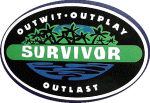My four year old son was playing trains downstairs with two of his friends last week. It was going great until one of the friends somehow ended up with 5 train cars while my son only had 4. This sent my four year old into a tizzy in which he stomped out of the room and sulked on the floor in the kitchen.
“He has more than me.” was the response I got when I asked him what was wrong.
So trying to think quickly and forgetting that I was dealing with a four year old, I asked him if he had been having fun playing with four trains before he realized that his friend had five? “Yes…but it’s not fair. He won’t share and he has more.”
My equally “way-too-old” for a four year old response was, “but right now you have none – which is more fun, playing with four or playing with none?” I thought I had him here….
He looked at me with a quizzical stare and held up his hand with all five fingers out – “Five!” he said in response with 100% conviction. Ahh yes, I’m dealing with a four year old mind.







